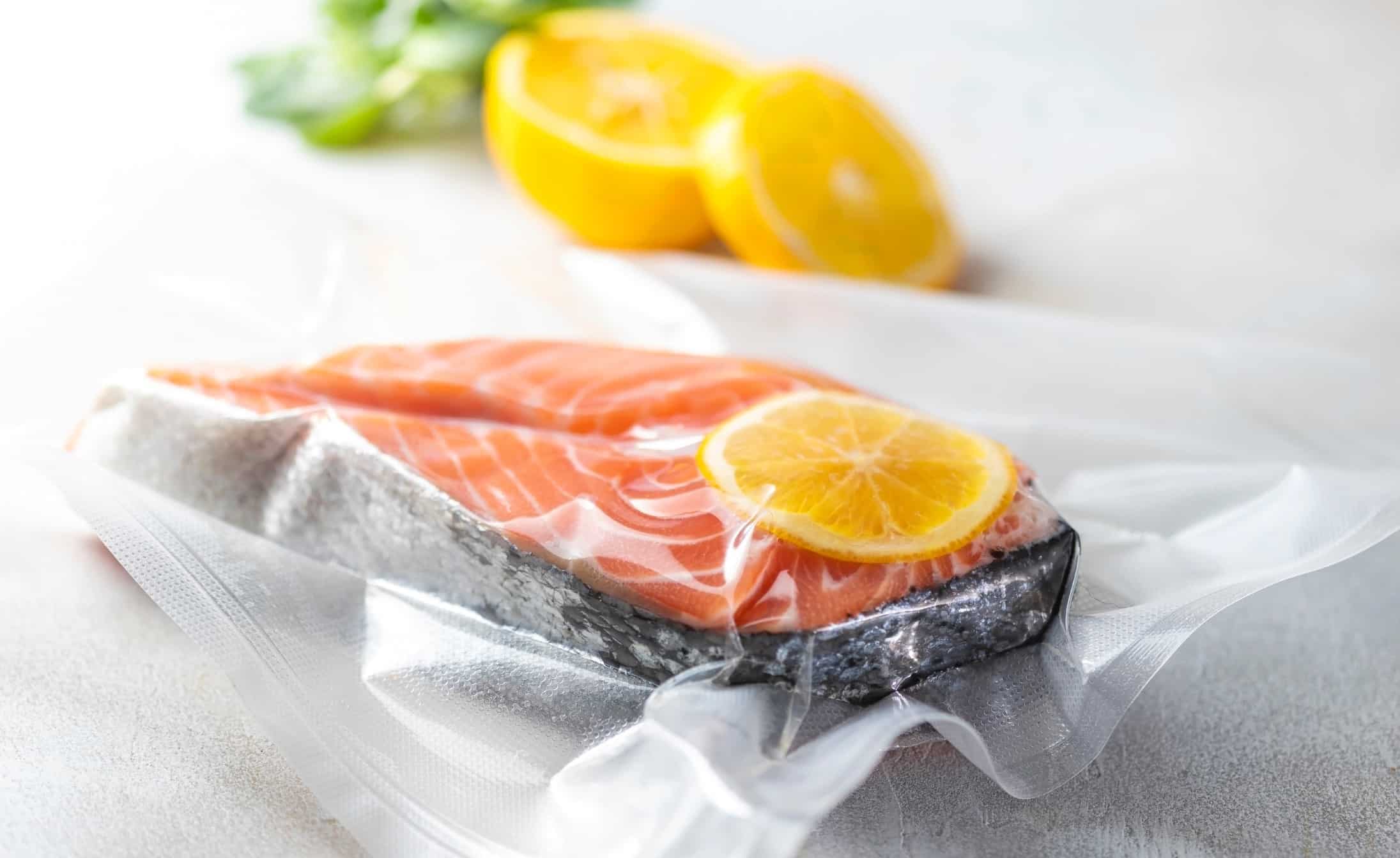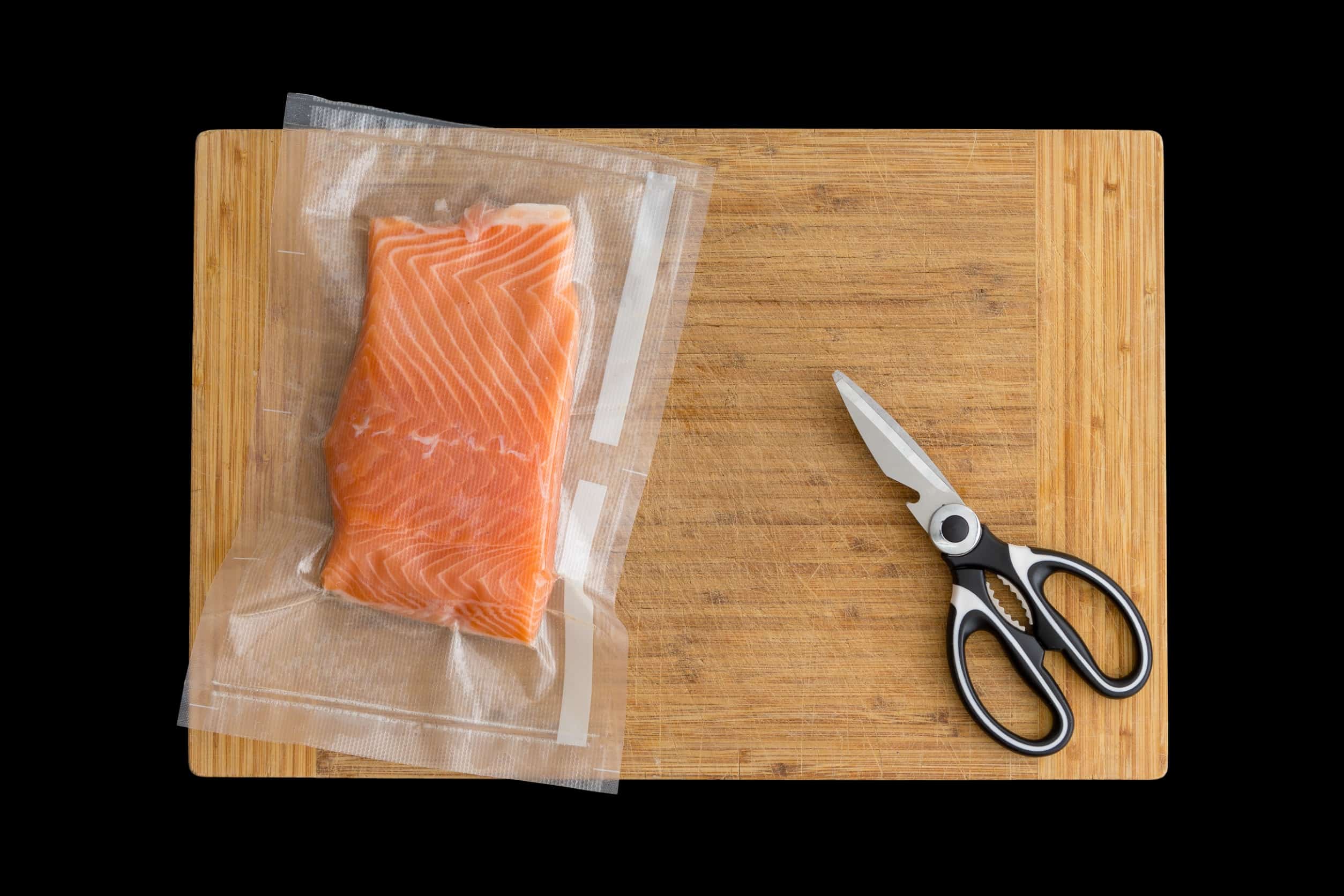Salmon is one of the most sought-after and widely consumed fish in the world, prized for its rich flavor, versatility, and numerous health benefits.
According to the National Oceanic and Atmospheric Administration (NOAA), salmon is one of the most popular fish consumed in the United States. In fact, the country has imported around 900 million pounds of salmon and domestically produced over 400 million pounds in 2019 alone.
However, like any perishable food item, it is essential to store salmon properly to ensure that it’s safe and fresh, especially since it tends to be more expensive than other types of fish available on the market.
One of the most popular methods to preserve salmon and extend its shelf life is vacuum sealing. When stored in the right conditions, this flavorful fish can typically last up to 2 years in the freezer. But you may notice a change in its quality after 6 to 12 months.
That’s a huge advantage for many consumers, as vacuum-sealed salmon can only last for about two days before it spoils in the fridge.
So if you are looking to get the most value out of your money, then vacuum sealing your salmon for long-term storage in the freezer is definitely something worth considering.
In this article, we will explore the shelf life of vacuum-sealed salmon in the fridge and provide tips on how to store it to maximize its freshness. So whether you are a seafood enthusiast or just someone who wants to have some salmon ready for quick meals, this guide will have everything you need.
Factors that Affect the Shelf Life of Vacuum-Sealed Salmon

It’s important to be aware of the factors that can affect your salmon’s shelf life to make sure that it lasts for as long as possible. Here are some of the most important considerations for you to keep in mind when storing this fish in the freezer:
1. Temperature
One of the most important factors that can affect the shelf life of vacuum-sealed salmon is temperature.
The ideal storage temperature range for all types of seafood, including salmon, is around 0°F or below to prevent the growth of bacteria and other microorganisms that accelerate spoilage.
So it makes sense that salmon can only be kept for two (2) days in the fridge, as the temperature inside is quite high when compared to the freezer, sitting at around 35-38°F (1.7-3.3°C). It’s simply not cold enough to completely halt bacterial growth this way.
If you want to keep your supply of salmon at its best quality, it’s recommended that you pay close attention to the temperature setting of the specific appliance that you are using.
2. Packaging
Another factor that you have to look out for is the quality of the packaging that your salmon is stored in.
Since store-bought salmon usually comes in a plastic wrap or Styrofoam tray, it may be necessary for you to transfer it from its original packaging into a vacuum-sealed bag for longer storage in the freezer.
But if you will be cooking the fish in around one to two days max, then it’s not necessary to do so as the fish won’t be exposed to freezer burn.
Whenever possible, try to use high-quality vacuum-sealed bags, as those are specifically designed to keep out moisture and maintain the quality of your salmon.
3. Freezer Conditions
Many people tend to overlook this, but the condition of your freezer can also impact the shelf life of your goods inside, including your supply of salmon.
Making sure that the freezer is clean and well organized will prevent cross-contamination and ensure that your salmon is free of unwanted odors and flavors.
4. Quality of the Fish
Finally, and most importantly, the quality of the salmon you buy from the market also affects how long it can last in the fridge.
When selecting your fish, try to choose one that has a firm texture and springs back when pressed. It should also have a clearly marked expiration date printed on its packaging.
How to Identify Spoiled Vacuum-Sealed Salmon

There will still be instances when your vacuum-sealed salmon gets spoiled despite taking all the necessary precautions and following proper storage techniques. Below are some signs that you have to look out for to determine if your supply is no longer good for consumption:
Foul odor
Fresh salmon should have a mild, ocean-like scent. So if your salmon has a pungent or fishy smell, it is possible that it has already gone bad.
Discoloration
Another indication that your salmon is no longer fresh is a grayish-brown hue, different from its usual bright pink color.
Slimy texture
Like other seafood items, a salmon that has a slimy or mushy texture is already spoiled. When this happens, it’s better to just throw it away immediately so you can avoid getting food poisoning.
Mold growth
Another clear indication of spoilage is mold growth on the surface of your salmon.
If you are experiencing nausea, vomiting, diarrhea, and stomach cramps after eating salmon that was stored for a while in the freezer, it is more than likely that you have been food poisoned and have to consult a health care professional immediately.
It is better to err on the side of caution and discard the salmon once it shows any of the signs mentioned above to avoid those kinds of instances.
Final Thoughts
Vacuum sealing is a great method to preserve salmon and extend its shelf life for future use. But you have to keep a close eye on factors like temperature and packaging to ensure its quality and safety.
With the tips mentioned in this article, you can enjoy the delicious taste of salmon whenever you want without having to worry about your supply going bad. But just to be on the safe side, remember to remain vigilant and be on the lookout for any signs of spoilage.
